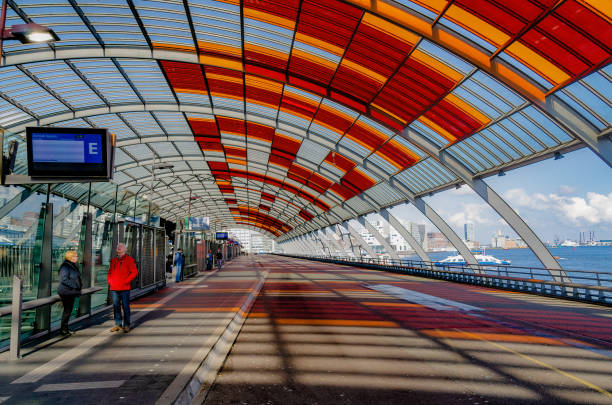How statistics and dynamic thermal simulation support green building
Winner of the VINCI Energies challenge at the VivaTech 2019 conference, Helios Exchange aims to be the leading integrated platform for building energy retrofit projects. For owners of commercial buildings, this means substantial time and money savings.
Owners of commercial properties with a surface area equal to or greater than 1,000m2 now have little choice but to take urgent action on energy use in their buildings. In France, for example, a recent decree forming part of the housing, planning and digital technology reform law (Elan) requires buildings to cut their final energy consumption at least 40% by 2030 (compared to 2010 levels), 50% by 2040 and 60% by 2050.
The situation is all the more pressing since the building sector has not been all that prompt so far in taking the necessary steps in this field. “A number of barriers must be removed to enable widespread access to energy retrofit: high transaction costs, a fragmented ecosystem, a lack of standardised processes and indicators, long assessment times, etc.,” says Pierre Blanchet, Building Solutions innovation manager at VINCI Energies.
Take the case of an owner of 10 buildings. To find out how much energy each one of them uses, the owner needs to commission an engineering consultancy to audit each site, with a price tag of €10,000 to €20,000 per building. The next step involves waiting three weeks to obtain 10 status reports, returned in PDF format. At this point, the owner has no overall picture of the building portfolio’s consumption as a whole, making it difficult to choose the best course of action in terms of strategic priorities and economic constraints.
Change of scale
For a building owner, energy efficiency is first and foremost a matter of economics. Any retrofit scenario is a business case to which the owner must be able to link performance risk and return on investment.
“Energy retrofit in the commercial sector requires tools that simplify project administration and delivery, reduce costs, quantify performance risk and assess each measure’s impact.”
“If energy retrofit in the commercial sector is to scale up and move to an industrial pace, it requires tools that simplify project administration and delivery, reduce transaction costs, compress execution times, quantify performance risk and estimate the impact of each measure,” explains Pierre Trevet, CEO of Helios Exchange.
Designed around building energy retrofit development, insurance and financing, the Helios Exchange integrated software platform allows property sector players to remotely manage all the links in the energy retrofit chain.
Winner of the VINCI Energies challenge at the VivaTech 2019 conference, Helios Exchange can analyse and manage data relating to energy assessment, retrofit project scenarios and development, works cost estimation, performance risk calculation and standardised measurement and verification of actions. “It’s an original tool that supports decision making,” says Blanchet.
Calibrating statistics to actual scenarios
Unlike other dynamic thermal simulation tools, Helios Exchange is built around stochastic simulation. “We wanted to create an agile method that helps reduce uncertainty as you go along,” explains Trevet.
Using a library of archetypes derived from statistical data, the tool calculates average indicators based on generic characteristics (type, function and location of building, etc.). The initial simulation is refined by entering data supplied by the operator and/or held by its operator service-provider: temperature, internal heat gains; thermal characteristics of walls, windows and roofing; lighting, cooling, heating and ventilation, etc.
What makes Helios unique is that it can “tweak” the statistical data to calibrate it to actual scenarios. The solution proposes a list of energy efficiency measures (EEM) only after the metrics’ reliability has been improved in this way. The measures range from installing LED lighting to optimising the building management system (BMS), servicing the air conditioning or heating system and carrying out more significant retrofit works (glazing, full insulation of the building).
Helios assesses each measure’s economics and improvement of energy performance. The algorithm offsets each measure’s performance against the other options while taking overall performance into account. “Our simulation tools are designed to create a calibrated model in a few hours instead of a few weeks. Remote energy assessments and audits will help reduce transaction costs and execution times threefold,” explains Trevet.
Did you like the article ?



